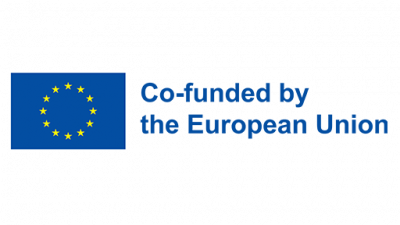Project
Enhancing Workforce Matching in Northern Central Finland
Project sponsors

In Northern Central Finland, there is simultaneously a shortage of skilled workers and a number of unemployed jobseekers. Companies report that they cannot find suitable employees, while jobseekers do not always receive a clear picture of the kinds of skills and workforce that employers are actually looking for. This mismatch leads to challenges in recruitment, education that does not always meet the needs of working life, and jobseekers being left without employment.
The aim of the project is to identify companies' real labour needs, barriers to employment, and employers' expectations. At this stage, the project does not yet change practices directly, but instead produces a comprehensive knowledge base. This data will enable education, recruitment, and employment services to be targeted more effectively in the following phases.
What will the project do in practice?
1. Listening to and engaging with companies
* Around 65 companies from 13 municipalities will take part in the data collection.
* CEOs, HR managers, and recruitment decision-makers will be interviewed.
* Interviews will be carried out on-site at companies, online, or by phone depending on their preference.
* Companies will be asked, for example, what kinds of skills they will need in the next 1–2 years, and whether
they are open to recruiting, for example, immigrants or workers over 55.
2. Combining statistics and existing knowledge
* The project will use statistics from the TE Office, previous labour force barometers, and business register
data.
* These will be combined with companies' own experiences to create a reliable and up-to-date overall picture.
3. Analysis on three levels
* Micro level: the needs and recruitment challenges of individual companies.
* Meso level: shared needs and trends within specific industries (e.g. ICT, metal industry, health and social
care, restaurant sector).
* Meta level: the overall balance of labour supply and demand across the region.
4. Compiling and modelling results
* Results will be presented as clear sector-specific profiles, visual infographics, and concrete
recommendations.
5. Dissemination of results
* Events will be organised for municipalities, employment services, companies, and educational institutions.
* Findings will be published in clear reports, slide decks, and concise infographics to ensure easy use.
* With this knowledge, career counsellors in both employment services and schools can advise their clients and
students on which sectors and skills currently offer the best employment opportunities.
What are the benefits of the project?
For companies: A chance to express directly what kind of workforce is needed and what factors would make recruitment easier.
For municipalities and employment services: Up-to-date information that helps target services and support where they are most needed.
For educational institutions: Concrete data on what skills should be prioritised in education and training.
For jobseekers and students: Indirectly improved employment opportunities, as employers' needs and jobseekers' skills will better match in future follow-up projects.
Project results
Initial situation at the project launch phase on September 1, 2025:
Concrete Results:
A comprehensive and up-to-date overview of labour demand and supply in Northern Central Finland:
* Micro level: individual company needs, recruitment barriers, readiness to hire different groups of employees.
* Meso level: labour needs within specific industries, identifying growing and declining sectors.
* Meta level: regional overview of the labour market structure and future outlook.
Mapping the business field:
* Approximately 65 companies involved, with at least 39 in-depth interviews.
* Data on company size, industry, stage of development, and potential as an employer.
Identified employment barriers and support needs:
* Factors slowing down recruitment (skills shortages, mismatch between education and jobs, language requirements,
etc.).
* Employers' expectations from public actors (education, recruitment services, financial support).
Sector-specific profiles and visual analyses:
* Infographics, slide decks, and reports clearly presenting, for example, recruitment needs by sector and
municipality.
Modelled data collection and analysis process:
* Development of a clear model that can also be applied in other employment regions.
Dissemination and implementation of results:
* Three regional briefing events for municipalities, companies, educational institutions, and employment actors.
* Four publications (report, blogs, social media posts, articles).
* Results already in use during the project (from October 2025 onwards).
Concrete Impacts:
Better basis for decision-making: Municipalities and employment services gain up-to-date knowledge, enabling more efficient allocation of resources.
Education aligned with labour market needs: Clear information on the skills and competencies employers need now and in the near future.
Stronger employer voice: Employers' experiences, barriers, and expectations are brought to light, supporting better targeting of recruitment services and incentives in the future.
Deeper understanding of labour market mismatch: Provides a fact-based explanation of why labour shortages and unemployment occur simultaneously.
Foundation for future development: The results guide priorities for follow-up projects (e.g. supplementary training, language education, support models for employers). The data collection and analysis model can be transferred to other regions as well.
